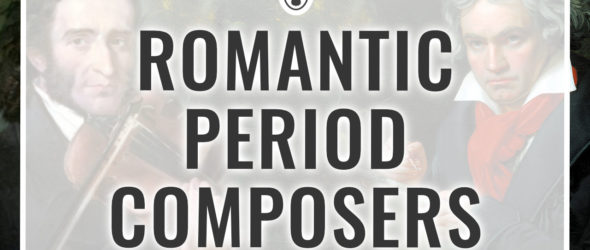Find out who were the romantic period composers and learn the historical background as well.
The Romantic Era of Western Classical music is one of the most progressive and inventive periods of music. The Age of Enlightenment completely redefined society and as a reaction, composers began to view music as their own; as individual art rather than a paid-for commission for the patriarchal leaders that reigned.
As society awoke to reality or, became “enlightened”, composers decided to create music that was pleasing to the general audience and brought the music back to the people, and created music, for the people.
What Is the Romantic Period?
The Romantic period falls somewhere between 1830 and 1900. Categorization by date is flimsy though because composers and time did not suddenly ‘become’ romantic, in fact, this transition took a great deal of time. The Enlightenment began in 1715 and ended in 1789 but these ideals did not ‘officially’ make their way into music until 1830.
The composers who are considered Romantic have similar ideas about their music, yet they each sound completely different from one another. This is a trademark of the Romantic Era, every composer is an individual; they are now considering themselves to be artists and want to put their identity into music.
Composers who made to this list are either prototypes of Romanticism (for example, the late-Classical/early-Romantic), fully-fledged romantics, or those who continue the Romantic traditions and push musical boundaries beyond their limits (as you will see in the Post-Romantic composers).
What Are the Identifying Qualities of a Romantic Piece of Music?
The identifying qualities of a romantic piece of music are: reflecting the people, including folk music and national identity, easy and beautiful melodies that anyone could sing (not just the famous prima donna!), melodies and ideas that reflect nature, and most importantly, music that was bound by no rules.
I love this era of Western classical music because it has many unique and individual qualities. Some of those include musical depictions of folklore, nationalist themes, folk songs, singable melodies, extensive lyricism, chromaticism to evoke a more natural approach to music, and music that is genuinely for the people and the general audience.
What Are the Five Periods of the Romantic Era?
The five periods of the Romantic Era are (loosely) define as the Late-Classical/Early-Romantic, the Early Romantic, the Middle, the Late, and the Post-Romantic.
I find it fascinating how in such a short span of time these composers created a considerable amount of musical output. I hope you will not only learn something from this article but also, enjoy the language of composers and their music.
1. Late-Classical/Early-Romantic
Compositions during this era are considered the bridge between the late-Classical period and the early-Romantic period. They are rather simple than what will come, yet demonstrate compositional characteristics of Romanticism.
2. Early-Romantic
Pieces that are Early-Romantic are structurally more conservative, meaning that the composer chose to stay within their predecessors’ models of a balanced piece, like a story with a beginning–middle–end. The content of these pieces, however, is much more personal and oriented to the general public. During this era, there is an explosion of folk songs and pieces that evoke a national identity.
3. Middle-Romantic
Composers of the Middle-Romantic period are full-fledged Romantics. By this point, they have learned the rules of their predecessors – namely, Beethoven, Haydn, and Mozart – and have learned how to break those rules and progress beyond what composers considered to be rigid (and generic) guidelines.
4. Late-Romantic
The Late-Romantic period composers are in some ways even more progressive than composers who came before them. They pushed boundaries- not only in terms of harmony and structure, but by redefining what a symphony was, or what was possible for an orchestra to play. They really began to individualize their music, placing their identity and reputation on the line in the name of progress.
5. Post-Romantic
Composers of the Post-Romantic period are the rebels of the Romantics and push the limits of music composition further than even the Late-Romantics. Some of these composers’ later works are actually considered to be “Modern” composers, but because they were influenced by Romantic ideals, are, therefore, considered more conservative compared with the true Modern composers. They bridged the gap between the two music periods.
Who Is Considered the First Romantic Composer?
The very first Romantic composer was none other than Herculean figure, Ludwig van Beethoven (1770–1827). Scholars consider the beginning of the Romantic Period as beginning with Beethoven’s Third Symphony in E-flat major, the ‘Eroica’. Beethoven famously un-dedicated this symphony for French Political Leader, Napoléon Bonaparte, a story which bears mentioning.
Bonaparte was (in the beginning) a heroic political figure who stood for the rights of the individual and self-governance. He campaigned as a champion of Enlightenment values until one day, he became the self-proclaimed ruler of the Holy-Roman Empire. Upon hearing this news, Beethoven ran over to the score of his third symphony (originally dedicated to Napoleon) and furiously erased the would-be dictator’s name, so angrily-so that he left a hole in the manuscript.
Originally dedicated “to a great man”, Beethoven’s final inscription for his ‘Eroica’ symphony was “in the memory of a great man,” a reference to Bonaparte who was once the hero of freedom (hence, the title of the symphony, ‘Eroica’) and had now become only a memory.
Now, let’s have a look at the composers and their famous pieces in each of the Romantic periods.
Late-Classical/Early-Romantic Composers
Ludwig van Beethoven (1770–1827) – German
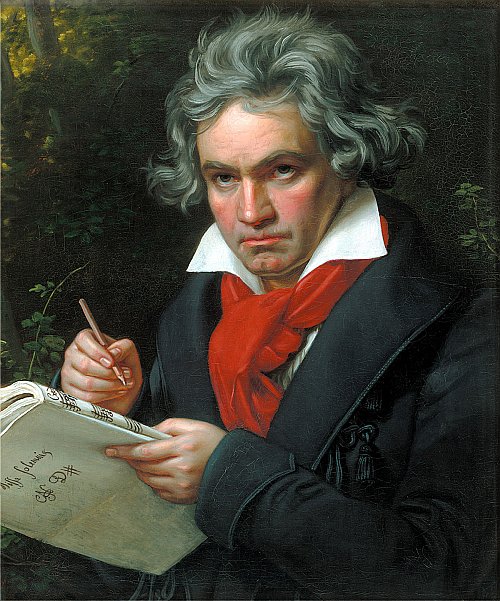
Beethoven’s Eroica and Ninth Symphony are perhaps his most famous pieces amongst all of his compositions. The Eroica is considered to be the first “Romantic” piece of music, and the ninth is the full realization of Beethoven as a romantic composer. Listen to just a few minutes of both and you can hear the major differences between the two symphonies.
In my Video Lesson library, you can find a tutorial and play-alongs for an easy arrangement of the most famous part of the Ninth Symphony – Ode to Joy. Here is the sheet music for you:
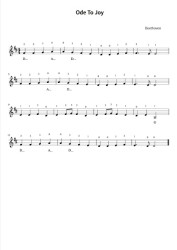
Ode to Joy – Beethoven
Free Violin Sheet Music
Niccolo Paganini (1782–1840) – Italian
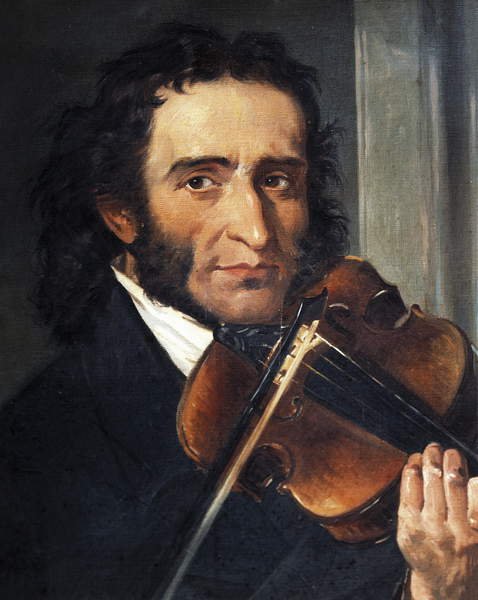
Paganini’s 24 Caprices, as beautiful as they are, have loomed over violinists as technically challenging and seemingly impossible to play. The most alluring of them all is No. 24 in A minor. The last caprice displays a wide range of virtuosity and brilliance, a relatively new concept for the music scene, a concept which contributed to the Italian composer’s international fame and recognition.
You can download the sheet music for free below and see for yourself how difficult the 24 Caprices are. Can you play one of them in full or a short snippet?
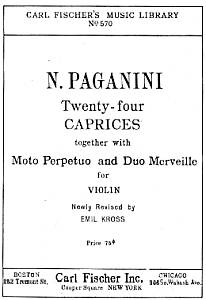
24 Caprices by Paganini
Free Violin Sheet Music
Carl Maria von Weber (1786–1826) – German
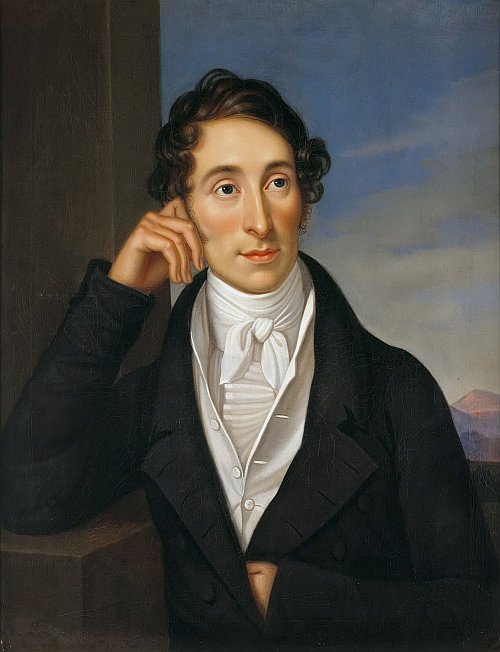
Der Freischütz is an opera that was one of the most successful in its time and heavily influenced composers, especially Richard Wagner. It is a musical rendition taken from the Gespensterbuch, a collection of German folklore and myths that was published in 1811-1815. People not only loved this opera because they already knew the story, but because it included many German folksongs and could sing along with the opera as they watched.
Franz Schubert (1797–1828) – Austrian
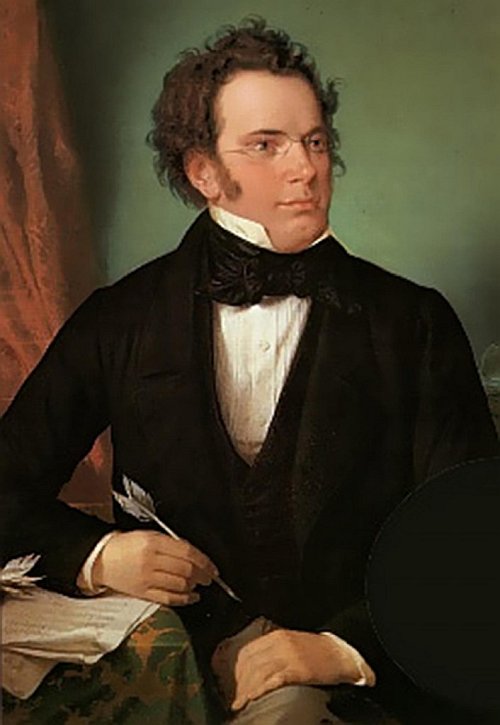
Der Erlkönig is another German fairytale written by Johann Wolfgang von Goethe. It is a supernatural tale of the Elf King who successfully snatches a child from his father as they are escaping on a horse. When you listen to this piece, listen closely for the hooves of the horse and how Schubert musically depicts the Elf King.
Gioachino Rossini (1792–1868) – Italian
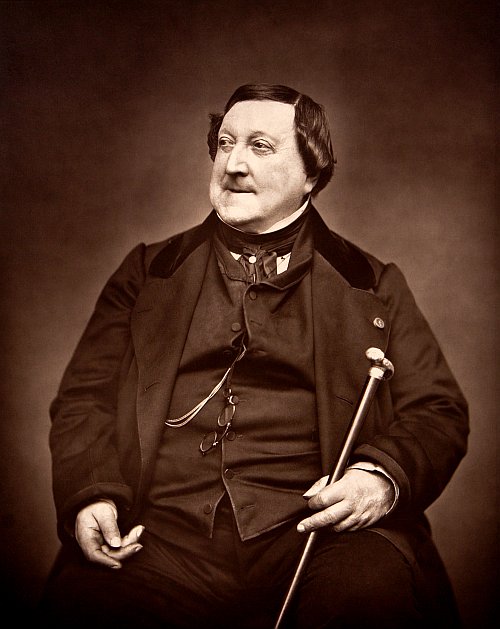
Italian composer Gioachino Rossini was the most famous, most successful, and richest composer during his time. He was so successful that he retired at only 37 years of age, almost 40 years before he would actually die. The William Tell Overture is his last major composition before retirement, and embodies the essence of what his music was: fun and party-like!
Early-Romantic Composers
Vincenzo Bellini (1801–1835) – Italian
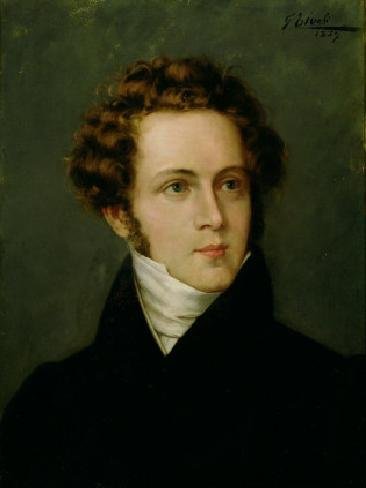
Vincenzo Bellini was a part of the Italian Bel-Canto composers (which literally translates to beautiful singing). Casta Diva is from Bellini’s opera Norma which exemplifies the beautiful and slow melodies unique to Italian Romantic opera. It is literally a prayer in the form of a melody and filled with subdued drama, a calling out to God to protect their people.
Hector Berlioz (1803–1869) – French
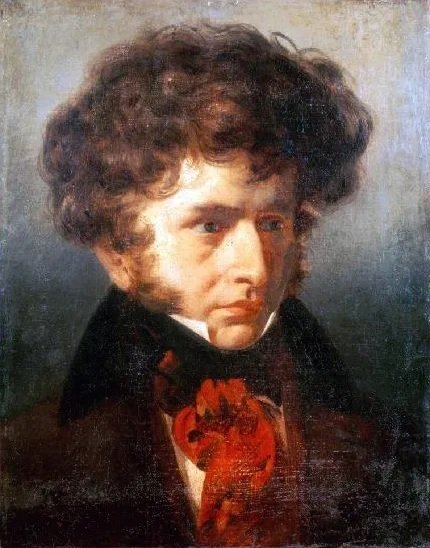
Symphonie Fantastique by Berlioz is the pioneer of what we call “programmatic” music. This type of music is a sort of narrative or story composed into the music. In this case, the story for this program symphony is auto-biographical. Berlioz took opium and composed his heartbreak into this work after falling in love with an actress from Shakespeare’s play Hamlet. He provides program notes, the narrative or story, before each movement.
Johann Strauss I (1804–1849) – Austrian
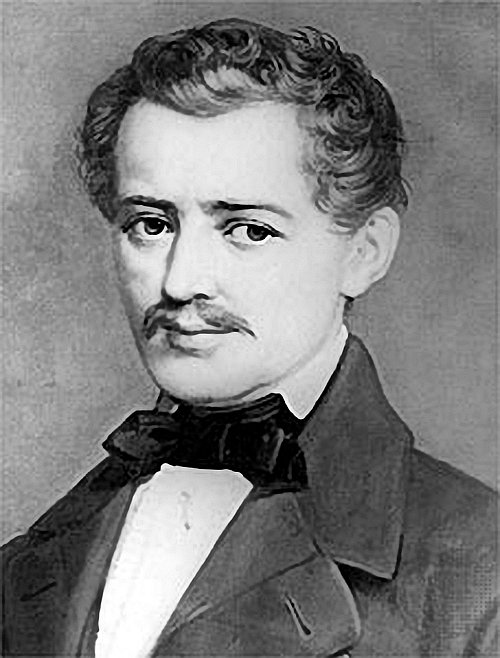
The Radetzky March is a symbol of Nationalism, a common trope in Romantic classical music. It is a celebratory march and was dedicated to the Battle of Custoza for Field Marshall Radetzky von Radetz.
Felix Mendelssohn (1809–1847) – German
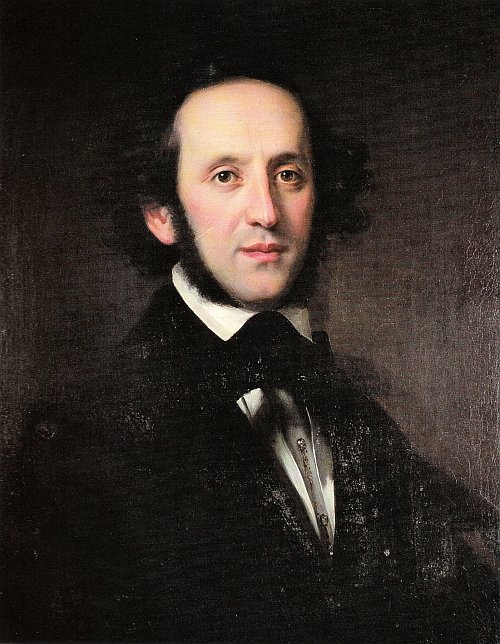
Shakespeare’s play had a great influence on many artists, and the young Mendelssohn was no exception. He originally wrote A Midsummer Night’s Dream as a stand-alone overture before including another work 16 years later, his so-called Incidental Music, Op. 61.
Robert Schumann (1810–1856) – German
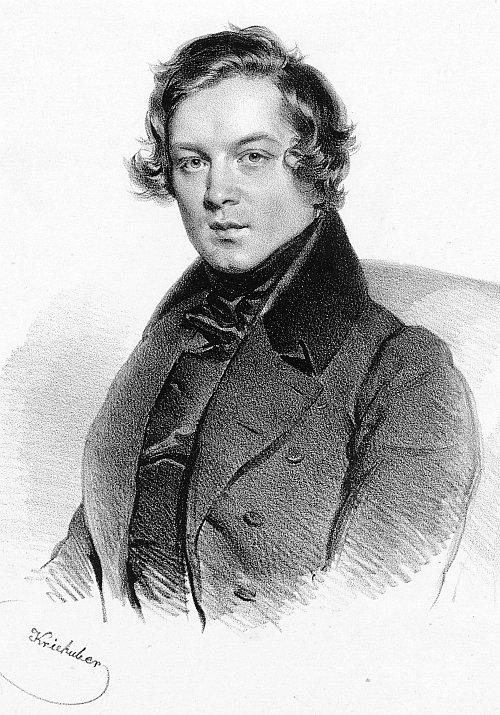
German composer Robert Schumann wrote Carnaval as a depiction of himself, his friends, and the Italian traditional Commedia del’Arte, the improvised comedy-skits which are comprised of generic, stock characters. (For example, the Father and the Mother, or the Son and the Daughter) It is comprised of 21 short movements and refers to the Christian festival before Lent, Carnaval.
Jacques Offenbach (1819–1880) – French
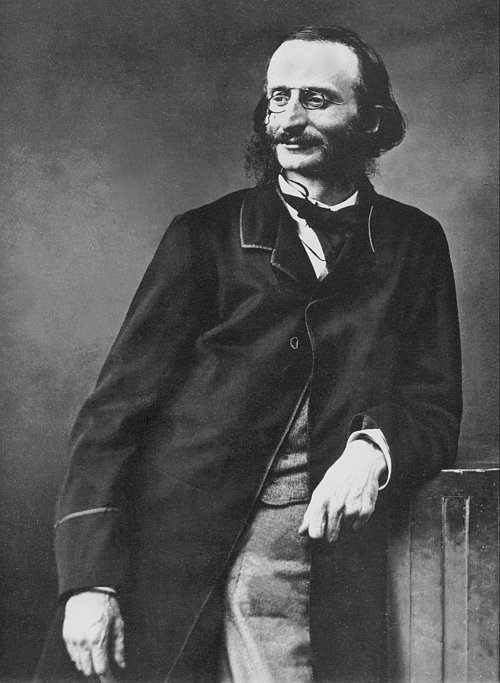
Offenbach’s Orpheus in the Underworld was and still is considered to be a risque opera. Originally, because the piece made a joke of mythology, and now because of the sexual content of the piece. Even so, this piece is fun all around and quite enjoyable.
If you’re one of my students in Julia’s Violin Academy, click here to access the Can Can tutorial, play-alongs, and the accompaniment for this piece.
Middle-Romantic Composers
Frédéric Chopin (1810–1849) – Polish
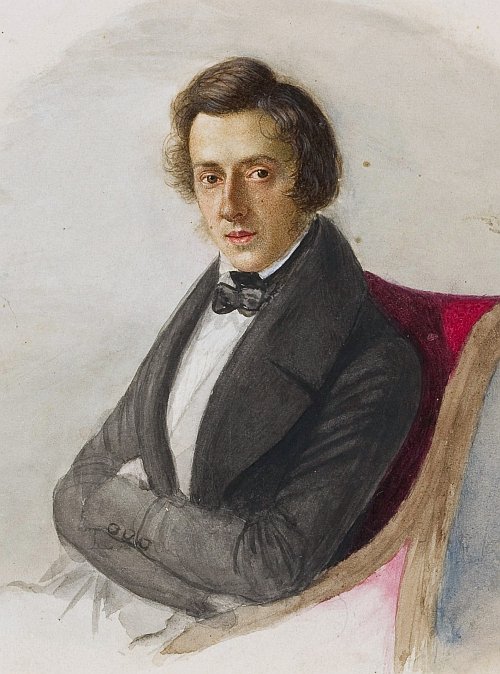
Chopin was one of the first salon piano virtuosos who gained international fame as a performing artist.
He redefined patronage for the artist and became one of the first to be funded solely by private funding. How so? He was quite talented, and his Nocturne, Op. 27 is a piece that he not only performed frequently but which only he could perform. Chopin became a celebrity and was in high demand during his time!
Franz Liszt (1811–1886) – Hungarian
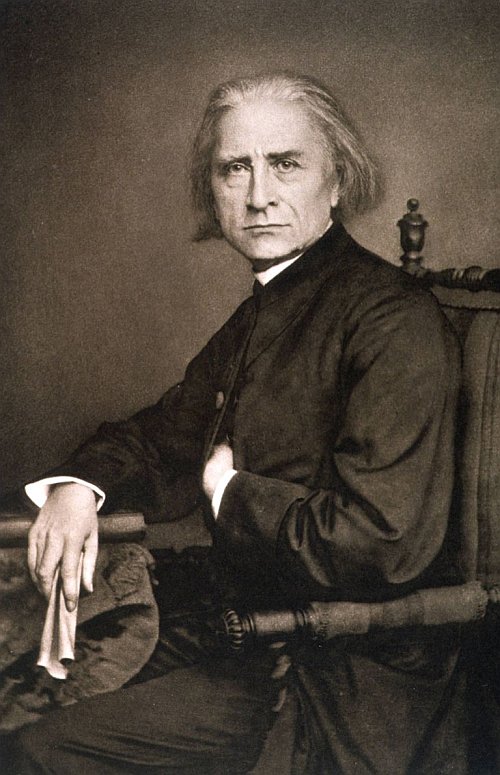
Franz Liszt is most recognized for being the greatest piano virtuoso of all times, and his Concert Etude No. 3 is an excellent example of why that held true. He is also the creator of the Symphonic Tone Poem which is most often associated with Johann Strauss II.
Giuseppe Verdi (1813–1901) – Italian
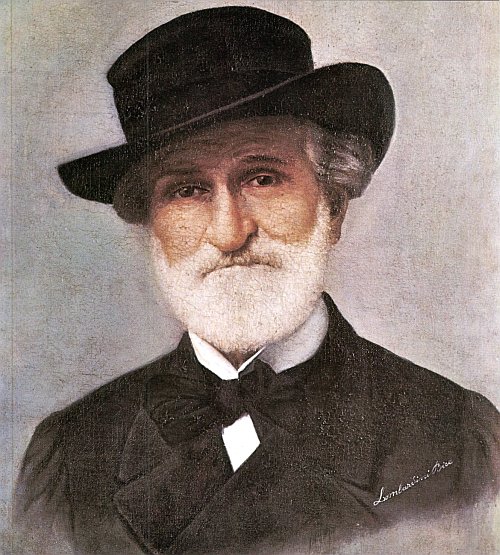
The Messa da Requiem is a concert piece that dramatizes a Catholic liturgical Mass. The second section of the piece, the Dies Irae, is one of the scariest and most thrilling pieces I have ever heard! This piece is surprisingly dark, yet so magnificent.
Bedřich Smetana (1824–1884) – Czech
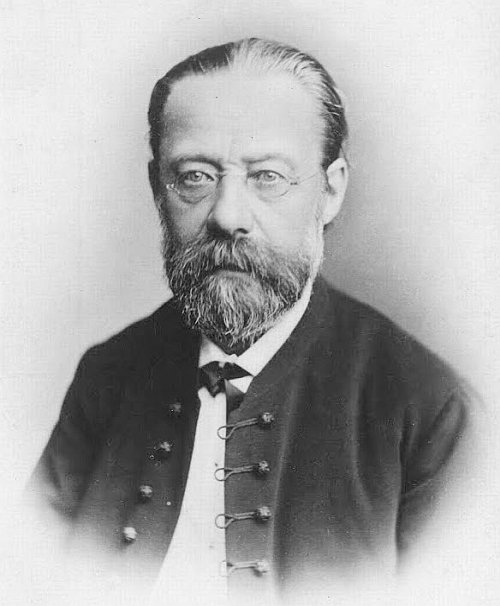
Smetana’s String Quartet No. 1 From My Life is another Programmatic piece of music that depicts scenes from the composer’s life beginning in his youth, until old age. Smetana describes the first theme from the viola as being “fate” knocking at the door, an omen that he will become deaf. In the final moments of this piece, the “fate” motif returns and brings along loud, ringing harmonics, symbolizing the composers’ tinnitus and impeding deafness.
Johannes Brahms (1833–1897) – German
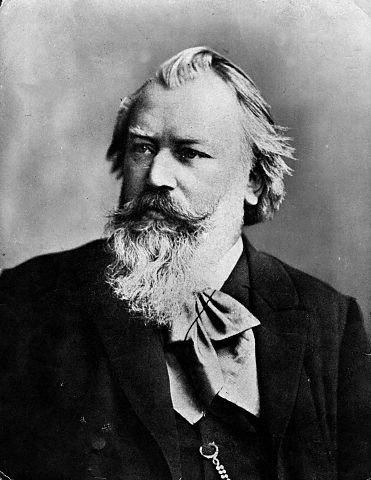
Brahms’ Fourth Symphony in E minor is also his last symphony. Brahms had great anxiety when it came to composing, and he once wrote in a letter “I will never write a symphony! You can’t have any idea what it’s like always to hear such a giant marching behind you!.” Each of his symphonies is important not only for the audience but for the composer’s life whose existential angst was imposed by the long-deceased Beethoven.
Brahms also composed Lullaby, which is an easy tune suitable for all beginners. You can learn this tune from my tutorial. Make sure to download the sheet music:
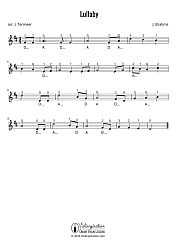
Lullaby – J. Brahms
Free Violin Sheet Music
Pyotr Ilyich Tchaikovsky (1840–1893) – Russian
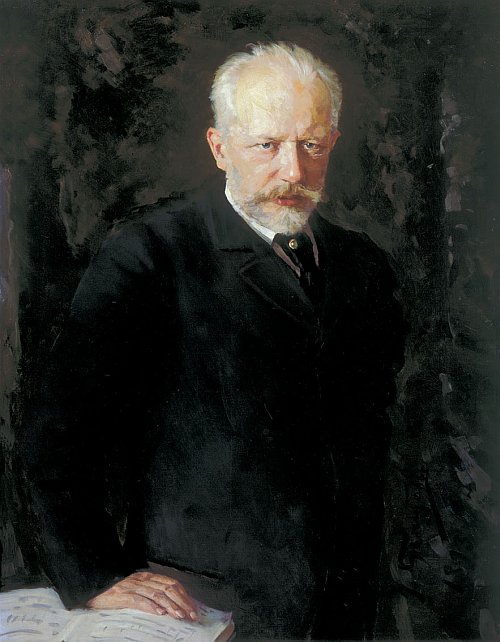
This list would not be complete without Brahms, nor Tchaikovsky. This symphony is Tchaikovsky’s last and embodies the pain and abandonment he felt his entire life. Though he also composed the happier Nutcracker Ballet, Tchaikovsky’s last symphony is about his internal melancholy. Tragically, after the premiere of this symphony, the composer would die only 9 days later.
You may be familiar with some melodies from the Nutracker. One of them is the Dance of the Sugar Plum Fairy. You will find an easy tutorial on this link and you can download my beginner-level arrangement of this tune here:
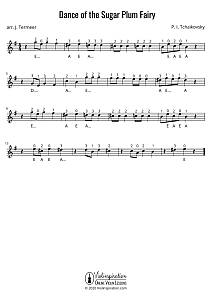
Dance of the Sugar Plum Fairy – P. I. Tchaikovsky
Free Violin Sheet Music
Antonín Dvořák (1841–1904) – Czech
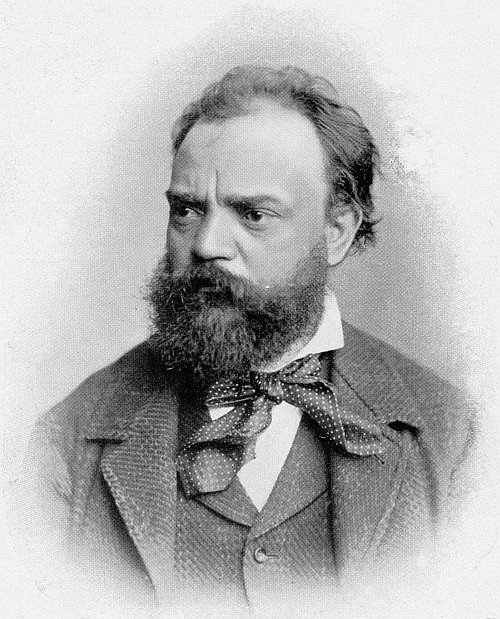
Dvořák’s Symphony No. 9 in E minor “From the New World” is a piece he composed while living in the United States. The piece depicts images and sounds of industrial America, and the sound of the “New World” can be heard very clearly in many ways. You can hear the sound of the train tracks, and you can also hear the sound of African-American spirituals, which Dvořák once commented that “the roots of American music were not European, but they were African-American.”
With the students at Julia’s Violin Academy, we made a project called Virtual Orchestra. The piece we played was the theme from Dvořák’s “From the New World”. Below you can watch the final result. If you’d like to be a part of such an amazing group of students, click here and request your invite to the Academy.
Late-Romantic Composers
Richard Wagner (1813–1883) – German
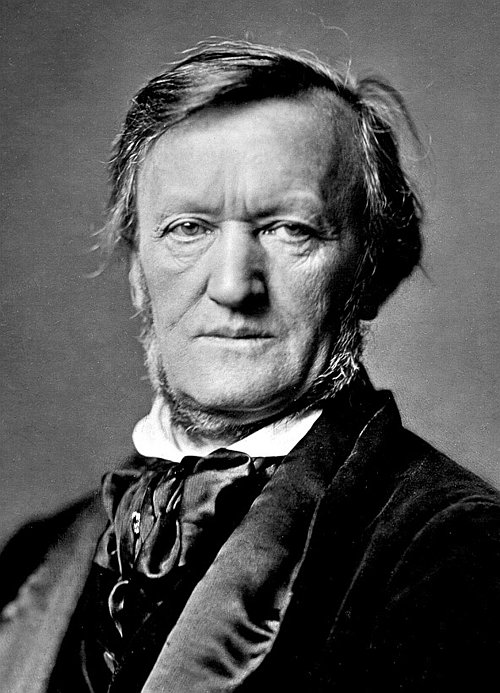
The Flying Dutchman Overture continues the tradition of German mythology making its way into music which carries an important lesson, there is redemption through love. This piece uses leitmotivs which are “themes” which represent specific characters. This innovative technique is still used today, primarily in film – think of John William’s music from Star Wars and Harry Potter.
Johann Strauss II (1825–1899) – Austrian
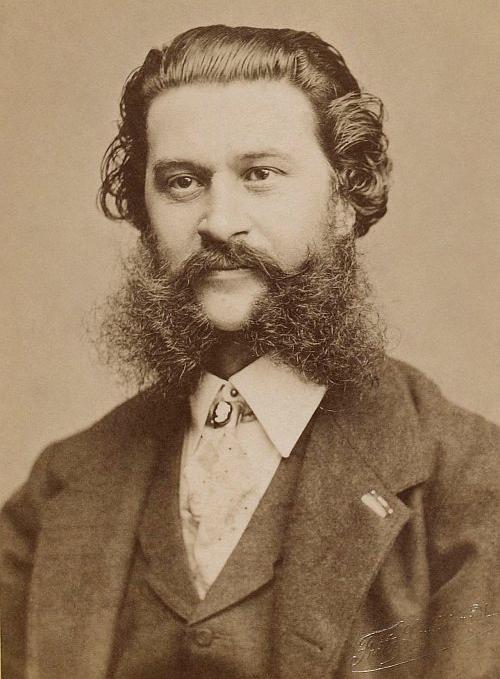
Don Quixote is a piece of music that redefines what a symphony is. Romantic music was forever changed with Strauss’ idea of the Tone Poem, a piece of music that tells a narrative story and evokes images, much like the image of Don Quixote in this work.
Edvard Grieg (1843-1907) – Norwegian
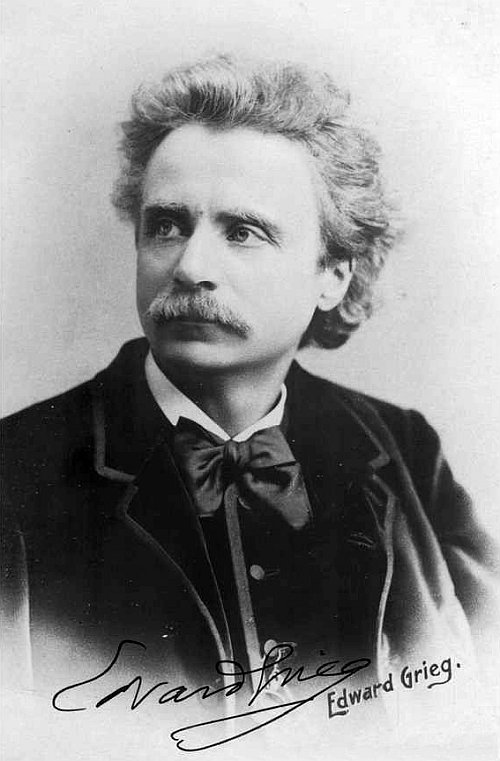
The first and final movements of the Peer Gynt suite are the most recognizable of all of Grieg’s works. This piece is sort of like a Tone Poem, as it evokes images for the imagination, but it does not tell a story, per se. It is rather a set of pieces that depict an image, like the first movement, The Morning.
Giacomo Puccini (1858–1924) – Italian
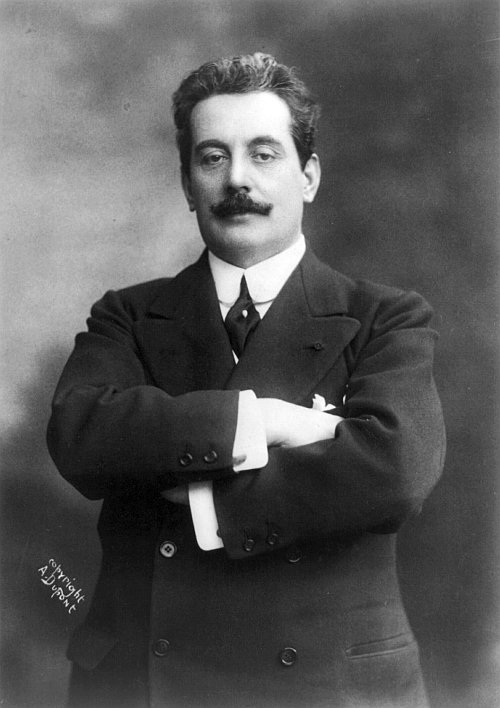
Puccini is from the Italian Bel Canto tradition, and the Nessun Dorma aria from his opera Turandot is a great example of what the late Romantics were capable of. This work is incredibly passionate and incredibly touching.
Gustav Mahler (1860–1911) – Austrian
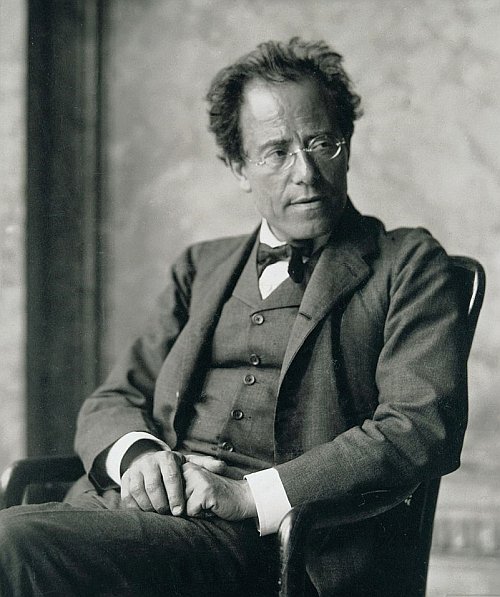
Mahler’s first symphony, the Titan, is a work that again, redefines the symphony. He pays homage to Beethoven in this symphony, but totally surpasses the artistic capabilities of his predecessor to great lengths. This piece is no doubt a symphony, but a magnificent and inventive piece that evokes the image of a “Titan.”
Jean Sibelius (1865–1957) – Finnish
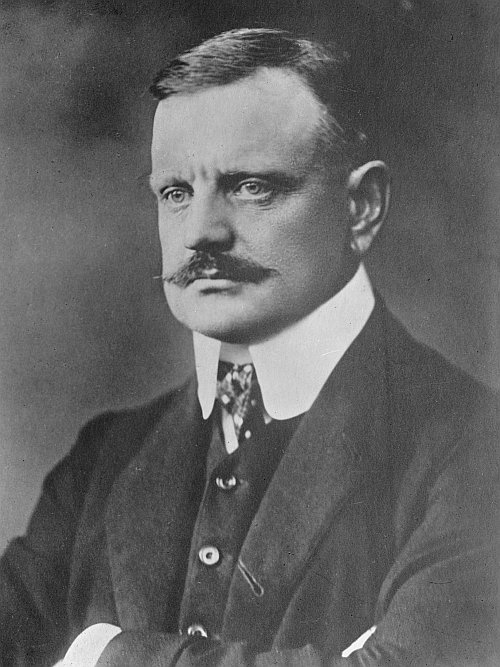
Jean Sibelius’ Symphony No. 4 captures the quiet and loneliness the composer felt in his heart. It is a testament to his trials and tribulations and is one of the darkest pieces in his compositional output. This symphony is nonetheless, an important part of the orchestral repertoire.
Sergei Rachmaninov (1873–1943) – Russian
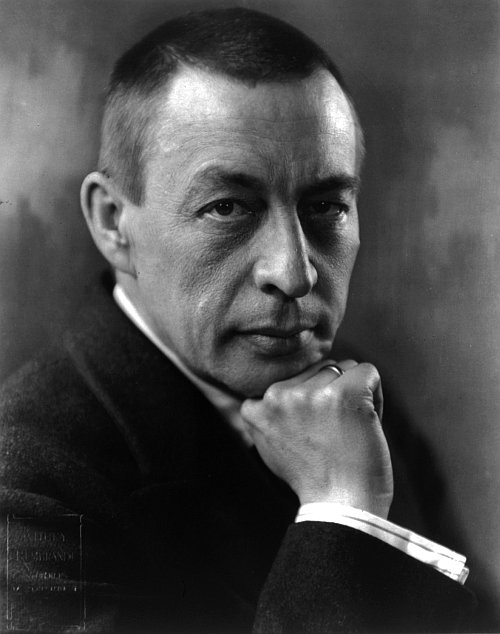
Russian Composer Sergei Rachmaninov was a leading virtuoso pianist of the 19th century. Many of his compositions feature the piano, and any virtuoso pianist from today can tell you how difficult his pieces are to play. He changed what the player was able to do, and created challenging music that was filled with drama and elegance.
Post-Romantic Composers
This group of composers is worth an introduction. They grew up with and studied composition during the time that Romantic ideals were at their musical peaks. Exposed to a historic compositional output that had many new innovations, these composers used those rules, broke those rules, and created their own rules; some quite literally.
These composers are the bridge between late-Romantic composers and the Modern era of music.
“The French Impressionists”
The French Impressionists are both Romantic and Modern composers, like the other two schools of thought on this list. Their music is abstract, even unconventional, but is perhaps the easiest to listen to and understand. Each of their pieces represents what they believed to be as images of something, much like a camera captures a scene of a moment.
Claude Debussy (1862–1918) – French
Erik Satie (1866–1925) – French
Maurice Ravel (1875–1937) – French
“The Mighty Five”
The Russian Five (sometimes called the Mighty Five) totally contested the notion of conservatory training. Each composer studied music on their own solely by listening and wanted to give Russia its own musical national identity on the world stage. The pieces are intentionally very Russian, and invite the audience to hear what the soul of Russia sounds like.
Alexander Borodin (1833–1887) – Russian
César Cui (1835–1918) – Russian
Mily Balakirev (1837 –1910) – Russian
Modest Mussorgsky (1839–1881) – Russian
Nikolai Rimsky-Korsakov (1844–1908) – Russian
“The Second Viennese School”
The Second Viennese School, much like their Russian and French counterparts, are a school of composers who took great pride in their works and set out to break all of the rules which had been previously established. They created a new, parallel set of rules which made equally as much logical sense as the rules that came before.
Arnold Schoenberg (1874–1951) – Austrian
Anton Webern (1883-1945) – Austrian
Alban Berg (1885-1935) – Austrian
Conclusion
The Romantic Era of Western Classical music was one of the most innovative and progressive eras in all of the periods of music. The composers felt a new sense of artistic freedom and explored almost every angle of music. Their innovations created a world of music that had yet to be explored. I hope you have found a new enjoyable piece of music from one of these composers!
P.S. Would you like to learn about Baroque period composers? Click here to read about the 12 greatest composers from the Baroque period.
